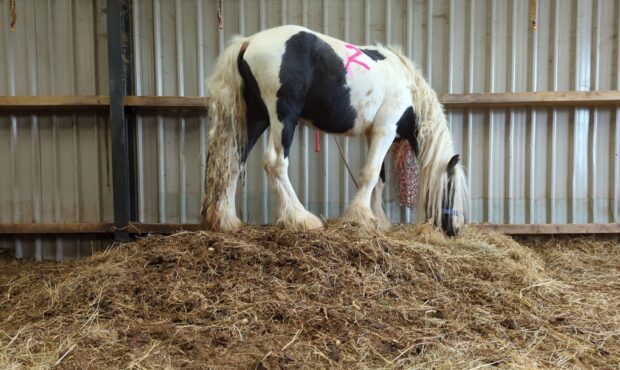The death of more than 20 ponies on Bodmin Moor last week has shocked local people and further highlighted the “equine crisis”, say welfare charities.
The ponies were dumped on Eastmoor, Cornwall, and left to starve. In total more than 20 died, including eight that were put down by Defra vets.
A further 30 animals are currently being monitored by the Government. But there is no clue as to whom the ponies belonged. Though microchipping has been compulsory in foals since 2009, this is ignored by many owners.
World Horse Welfare field officer Jeff Herrington was there.
“The scene was horrific,” he said. “I was walking across the moors and there were bodies everywhere I looked.
“We have to sort this out. We have to find a way to link animals to their owners to hold them accountable.”
Julie Dowton of the Bodmin Commoners Association told H&H that pony dumping on Bodmin is a growing concern.
“We had a couple of incidents in previous years, but thought we’d got on top of it,” she said. “But with the tough economic climate, more ponies are being abandoned.”
Redwings took in 19 ponies after a similar incident on Bodmin in 2011.
“This is a shocking and disappointing regression,” Redwings’ Nic de Brauwere said. “But if we can’t identify owners, we can’t prosecute. We are in the midst of an equine crisis; horse identification needs improving drastically.”
There are more than 600 ponies on Bodmin and Ms Dowton added that local farmers are “distraught”.
“It has made us look further at the issue of visible marking,” she said. “We are even looking at hot branding such as in Dartmoor and Exmoor so ponies are easily identifiable.”
The Exmoor Pony Society agrees it is vital to identify semi-feral ponies visually.
“It helps us recognise ponies that have been ‘dumped’ on the moor and may not be able to survive in such an environment,” said a spokesman.
World Horse Welfare disagrees with hot branding but would like to see other methods used.
“Microchipping has to provide the solution, as it must be possible in the near future to be able to scan at a distance,” said chief executive Roly Owers. “In the meantime, alternatives such as the short-range reading of microchips and cutting manes and tails need to be relied upon.
This news story was first published in Horse & Hound magazine (25 April 2013)




